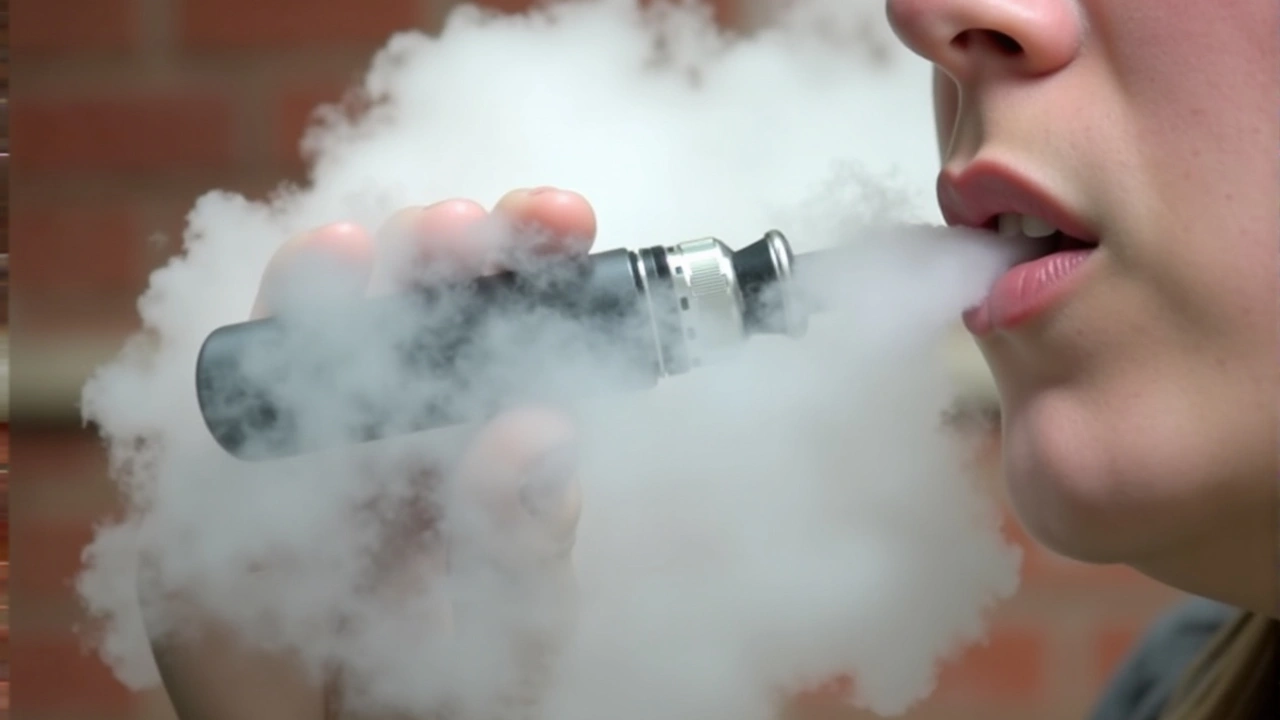Introduction to the Surge in Vaping Among Ex-Smokers
In recent years, the landscape of nicotine consumption has undergone a monumental shift, particularly among former smokers. A comprehensive study spearheaded by researchers at University College London (UCL) has cast light on the intriguing rise of vaping among ex-smokers in England. The findings illuminate that a staggering number of around two million individuals, who have successfully abstained from traditional smoking for more than a year, now find solace in e-cigarettes. This shift underscores a significant trend toward vaping, a less harmful alternative, amid the evolving narratives of public health.
Analyzing the Study's Findings
Delving into the study's rich tapestry of data, sourced from a meticulous survey conducted from October 2013 to May 2024, offers a panoramic view of vaping's trajectory. The research encompassed a robust participant pool of 54,251 adults across England, each a part of the diverse mosaic of individuals who had either ceased smoking or embarked on that journey. The revelation that two million ex-smokers are now engaging in vaping paints a vivid picture of the societal shifts in nicotine consumption preferences.
What stands out is the observation that the prevalence of vaping among ex-smokers is largely attributed to the instrumental role e-cigarettes play in quit attempts. Initially, in 2013, a mere one in 50 ex-smokers reported vaping - a statistic that had burgeoned to one in five by 2024. Such data-driven narratives are critical in mapping the evolving perceptions towards nicotine alternatives over the decade.
Diving Deeper: Age and Drinking Habits
The study also unraveled intriguing patterns when dissected through the prisms of age and drinking habits. In particular, younger age groups have embraced vaping post-smoking cessation with remarkable enthusiasm. To illustrate, a majority—over 59%—of 18-year-olds who quit smoking more than a year prior were vapers by May 2024. This contrasts starkly with the older demographics, as only 11% of individuals aged 65 were reported to engage in vaping. This age-sensitive variance sheds light on the gradually shifting cultural acceptance and reliance on vaping.
Moreover, drinking habits surfaced as a poignant marker. Ex-smokers with heavier drinking notorieties, constituting more than one-third of the heaviest drinkers, were notably more inclined towards vaping. This parallelism between drinking habits and the propensity to vape possibly points towards the intertwined dynamics of lifestyle choices and nicotine consumption.
Expert Insights and Recommendations
Dr. Sarah Jackson, one of the principal authors of the study and part of UCL's Institute of Epidemiology & Health Care, presented a nuanced interpretation of the findings. While she emphasized that transitioning to vaping stands as a less pernicious alternative to smoking, concerns linger over the persistent inclination to vape among individuals who had been nicotine-free. The NHS, keeping in mind these findings, delineates a pragmatic approach in guiding individuals to taper off vaping gradually rather than advocating for abrupt cessation, minimizing relapse risks effectively.
Understanding the Broader Implications
From a broader societal perspective, the study's deductions throw light on the persistent challenges public health campaigns face, despite the availability of relatively safer alternatives like vaping. The data, specifically gathered from the Smoking Toolkit Study, serves as a quintessential benchmark in understanding the post-smoking trajectories of individuals influenced by e-cigarette usage.
As we stand at this juncture where traditional smoking is phasing out in favor of vaping, the study invites a broader dialogue—encompassing regulators, health policymakers, and community leaders. How we incorporate these findings into crafting effective cessation strategies and informative frameworks holds the key to addressing public health concerns stemming from long-term vaping habits.
The Path Forward
In conclusion, the burgeoning statistics emphasizing millions of ex-smokers adopting vaping encapsulate an evolving narrative—one punctuated by shifts in lifestyle choices and nicotine consumption patterns. As the specifics of the study unravel the layers beneath these phenomena, it beckons collective introspection into how our societies adapt to these trends and the necessary frameworks to ensure safer, informed choices surrounding nicotine consumption. With these insights, it becomes imperative for all stakeholders to collaboratively forge paths towards healthier futures for generations to embrace.



